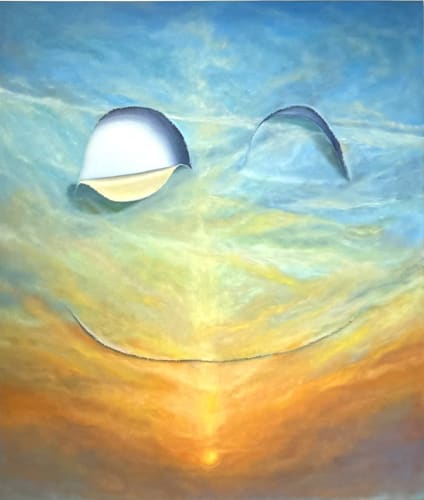Jeremy Shockley’s surrealist practice manipulates the conventions of landscape painting through the refined use of trompe-l'œil, a technique that creates the convincing illusion of three-dimensional space on a two-dimensional surface. By integrating optical illusion with narrative complexity, Shockley reimagines traditional landscapes as sites of playful disorientation, where spatial logic is subtly undermined and the viewer’s perception is deliberately unsettled.
Influenced by the literary tradition of magical realism, Shockley introduces uncanny and humorous elements into otherwise familiar or mundane scenarios. His paintings present visual paradoxes with a matter-of-fact sensibility, blurring the boundaries between the real and the imagined, resulting in a compelling visual experience that playfully interrogates the nature of perception, illusion, and truth.
In his studio practice, Shockley often begins by physically engaging with the materiality of the canvas itself—slashing or altering the surface to examine the interplay of shape, light, and shadow. These actions become the conceptual and visual foundation for his painted interventions: razor-thin cuts are meticulously rendered in oil to resemble actual slits, which may subtly form the contours of a face, a pair of eyes, a smiling mouth, or appear as text fragments embedded within the landscape.
Shockley’s work demonstrates a deep engagement with art history, particularly the traditions of illusionistic painting and the absurd. Yet his approach is entirely contemporary, anchored in a conceptual exploration of viewer participation, material play, and spatial ambiguity. His work has been exhibited internationally, across Europe, The US, Australia and Asia. Shockley lives and works in Los Angeles, California.
